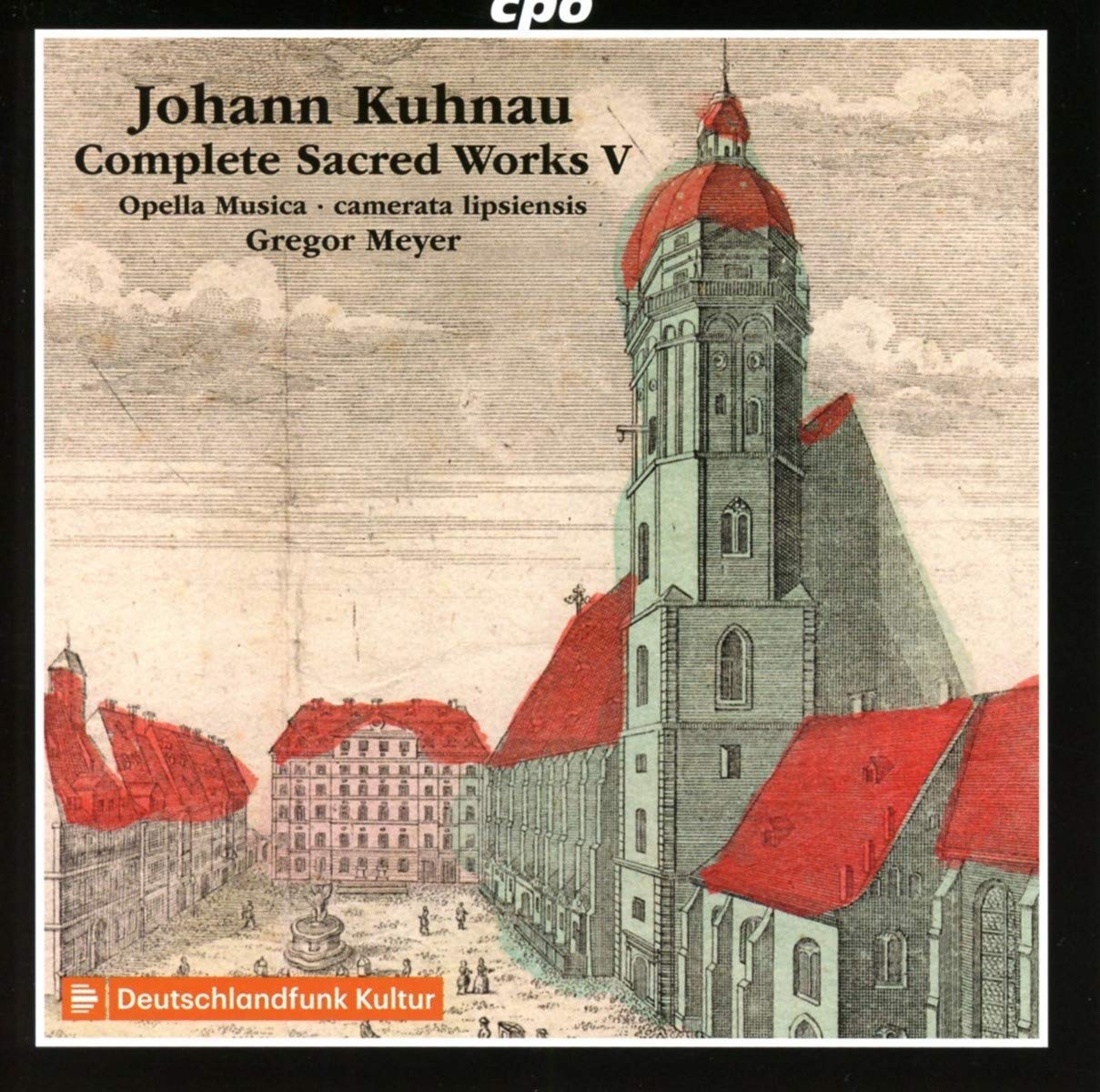Opella Musica, camerata lipsiensis, Gregor Meyer
67:33
cpo 555 260-2
Erschrick mein Herz vor dir, Gott sei mir gnädig, Ich habe Lust abzuscheiden, Singet dem Herrn, Weicht ihr Sorgen
Click HERE to buy this on amazon.co.uk
This CD continues this outstanding series in which all of Kuhnau’s surviving choral music is presented. The booklet promises that Breitkopf & Härtel will publish the material, which is good news for performers. Their counter tenor, David Erler, is working on editing the material for Breitkopf.
In many ways, the first cantata Gott sei mir gnädig nach deiner Güte – a setting of Luther’s translation of Psalm 51, Miserere mei Domine – is the richest. The texture is enhanced by 5-part strings and the dense chromatic word painting marks it out as one of Kuhnau’s masterpieces. The singers sing equally well as a group and individually, and the emerging arioso/recitative gives an indication of where expressive text-setting in the period before discrete recitative. By contrast the jolly Singet dem Herrn ein neues Lied seems less exciting: it is an ingenious composition, but the trumpets and drums stray little beyond the tonic/dominant fanfare style, and certainly there is no hint here of the amazing melodic trumpet parts that were to transform Bach’s more celebratory cantatas.
But all the music here is well worth hearing, and there is much to learn from the way in which these cantatas are performed. There is a single choro of singers, one-to-a-part; and the same of strings. Behind this edifice of sound rises the rich voice of the organ – again the Silbermann organ in the Georgenkirche in Rötha (where the recording was made) which Kuhnau inspected in 1721, the year before he died. Other voices – an oboe, a traverso and the pair of trumpets – add colour, and the fagotto as a bass instrument with the string choir as well as the lute hark back to the favoured bass line of Schütz before the violoncello assumed such a dominant role in the developing Baroque orchestra and the 16’ violone became a sine qua non.
But the attention of the players and singers to each other – the way phrases are tossed between singers and players – gives the music both the intimacy and the clarity that is a hallmark of their style.
I reviewed Vol III of this project in March 2018, and I think that the soprano tone is better than it was – less 20th century in style. That’s a plus in my book.
David Stancliffe
